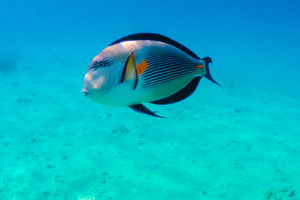Dolphins are mammals that live in water and possess highly developed brains, enabling them to engage in complex social communication, learning, memory, problem-solving, tool usage, and other behaviors.
They are considered one of the most intelligent animals on Earth.
So, why are dolphins particularly smart? How is their intelligence formed and developed? This article will explore the mystery of dolphin intelligence from various perspectives.
1. Dolphin Brain Structure
Relative to their body size, dolphins have remarkably large brains. The brain of a dolphin constitutes about 2% of its body weight, compared to 2.1% in humans, 1.3% in chimpanzees, 1.2% in dogs, and 0.9% in cats.
Additionally, dolphins possess impressive brain volumes, with some species such as orcas and sperm whales even surpassing humans. The brain volume of an orca is approximately 5900 cubic centimeters, while a sperm whale's brain volume is about 7800 cubic centimeters, whereas the human brain volume is around 1350 cubic centimeters.
Not only are dolphin brains large, but they are also complex. Dolphins' brains feature numerous convolutions and folds, indicating a higher number of neurons and synapses for increased information processing and storage.
The cortical region of the dolphin brain, responsible for advanced cognitive functions, is even thicker than that of humans. Dolphins also possess a unique paralimbic lobe, connecting emotional and rational parts, which may be related to their social and emotional capabilities.
2. Dolphin Evolutionary History
Dolphins evolved from terrestrial mammals and share a common ancestor with even-toed ungulates such as cows and sheep.
Based on fossil records and DNA analysis, dolphins began transitioning to an aquatic lifestyle approximately 50 million years ago. During this process, dolphins underwent numerous adaptive changes in their anatomy and behavior, including:
- Loss of hind limbs and pelvic bones, resulting in a streamlined body adapted for swift swimming underwater.
- Development of powerful flippers and dorsal fins, enhancing propulsion and stability.
These adaptations enabled dolphins to survive and reproduce in aquatic environments and facilitated the development of their brains. On one hand, the aquatic environment poses more challenges and diversity than terrestrial environments, requiring higher intelligence and creativity.
On the other hand, the aquatic environment also necessitates cooperation and coordination among dolphins, fostering their social and emotional intelligence.
3. Dolphin Living Environment
Dolphins inhabit various marine and freshwater environments worldwide, with some species even thriving in the frigid waters of polar regions. Dolphins are typically not solitary animals but live in groups, some of which can comprise hundreds or even thousands of individuals.
Dolphins exhibit complex social structures and relationships, engaging in behaviors such as aiding, protecting, playing, competing, mating, etc. They also interact with other species such as whales, sea lions, sea turtles, and humans, either for cooperative activities, play, or friendly encounters.
The rich and diverse living environment of dolphins enriches their experiences and knowledge, enhancing their adaptability and learning abilities. Dolphins can choose appropriate behavioral strategies and methods based on different contexts and goals.
For example, dolphins utilize tools or techniques such as mud waves, bubbles, and seaweed to capture prey. They learn and entertain themselves by mimicking the sounds or actions of other dolphins or humans. Dolphins also use their vocalizations or body language to convey information or express emotions.
Dolphin intelligence stems not only from the complexity and capacity of their brains but also from their evolutionary adaptation to aquatic environments, which has endowed them with strong adaptability and sociability. Dolphin intelligence is interconnected with their ecosystems, group living, and interactions with other species.
By gaining a deeper understanding of dolphins, we may better appreciate the beauty of intelligence across different organisms on Earth and the valuable treasures brought forth by protecting and respecting these beings.


